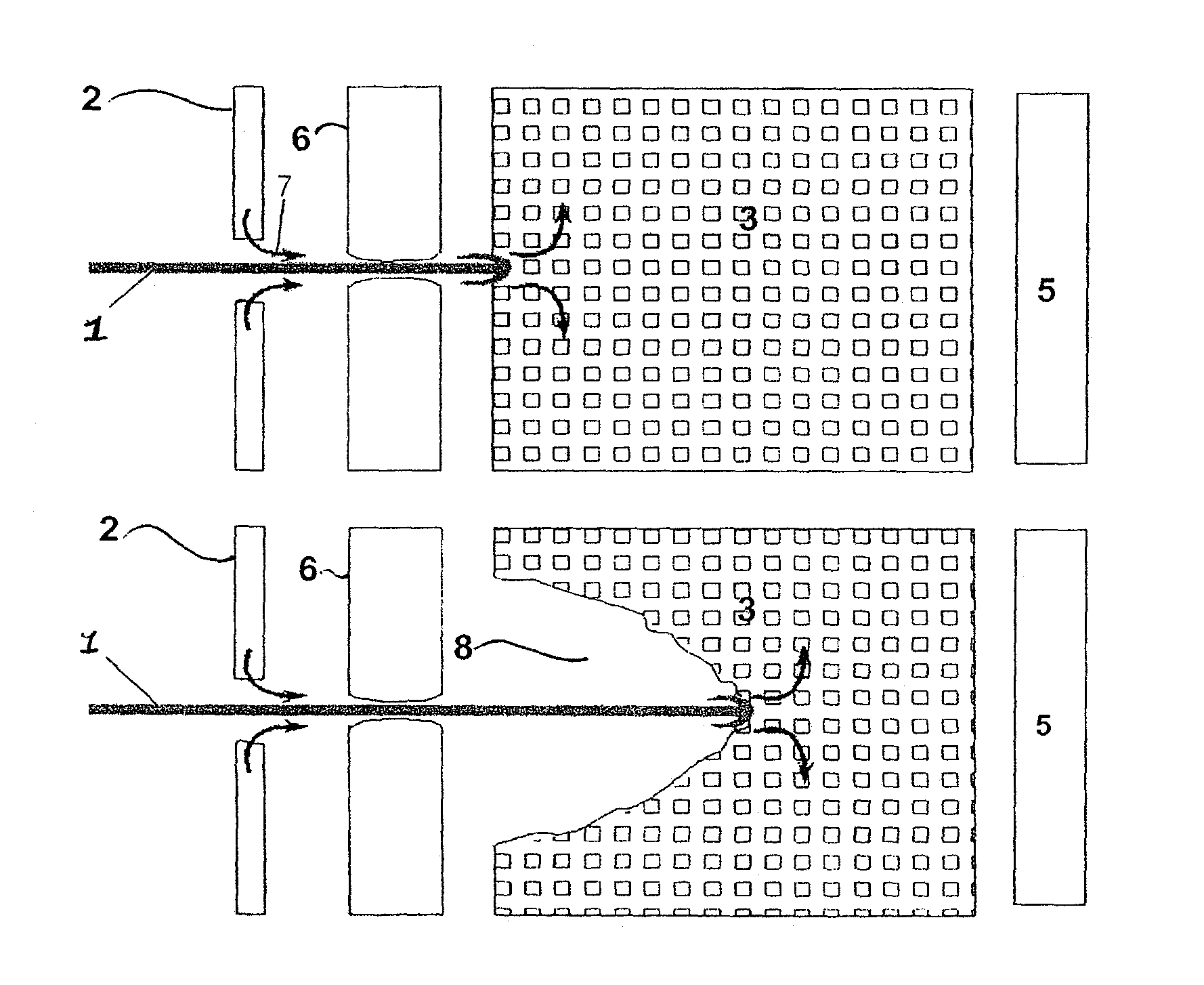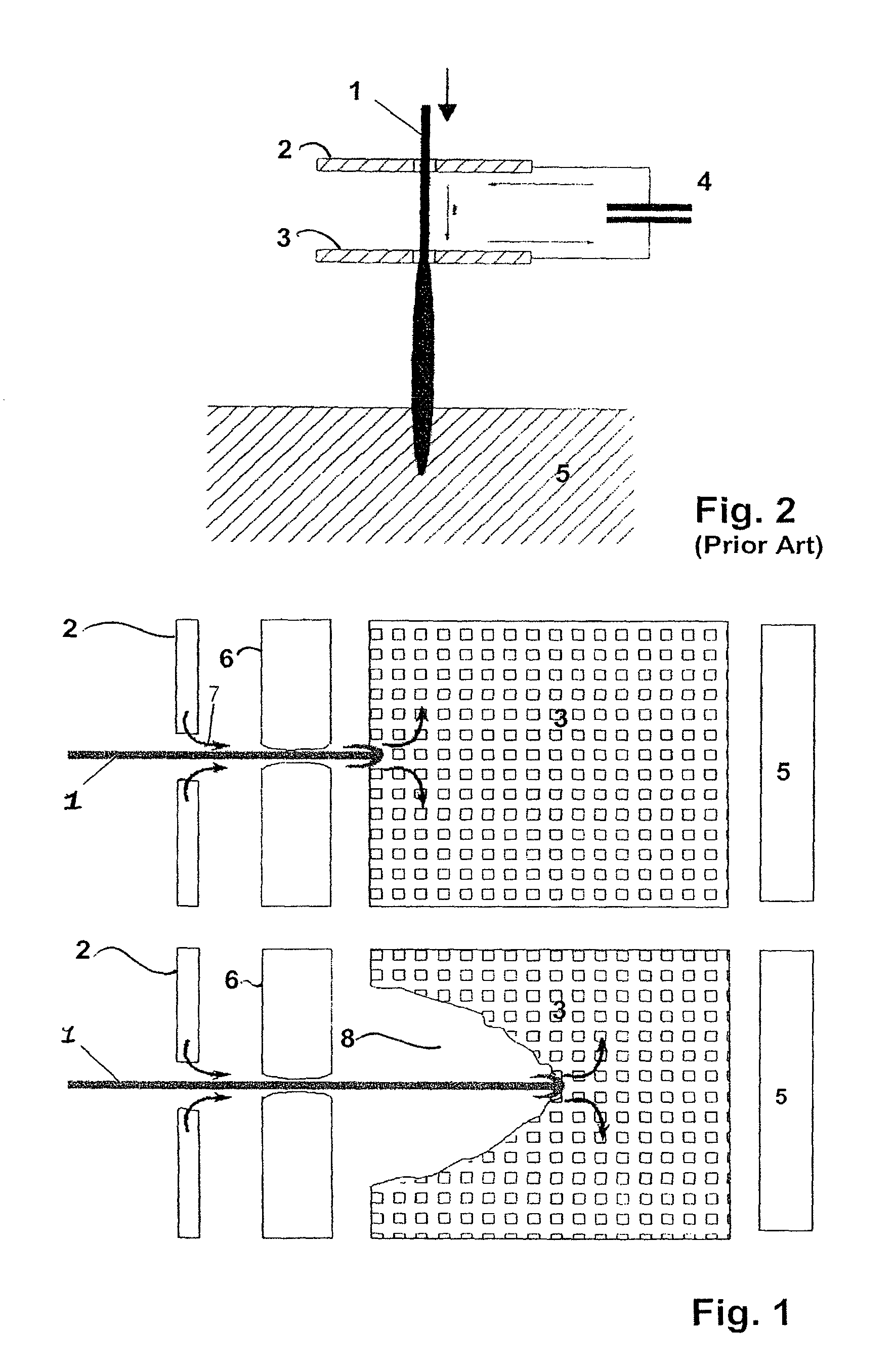Protective module using electric current to protect objects against threats, especially from shaped charges
a technology of protection module and electric current, which is applied in the field of protection module using electric current, can solve the problems of widening the cross section of the jet, no adequate way to disturb and disturbing the jet, so as to improve the disintegration effect of the shaped charge j
- Summary
- Abstract
- Description
- Claims
- Application Information
AI Technical Summary
Benefits of technology
Problems solved by technology
Method used
Image
Examples
Embodiment Construction
[0026]FIG. 1 shows a schematic principle representation of the arrangement designed according to the invention for protection from shaped charge jets. The two picture sequences depicted in FIG. 1 each show a shaped charge jet 1 penetrating a front electrode 2 facing away from the object 5 from the left and then propagating to the right. In the jet direction of the shaped charge jet 1, a stripper plate 6 made of an electrically insulating material, which can for example be made of polypropylene, is placed downstream of the electrode 2. Moreover, an electrode facing the object, a so-called rear electrode 3 is provided which in the depicted preferred embodiment is designed to be porous and encloses single cavities as the multiplicity of small boxes principally indicates. The upper sequential representation in FIG. 1 shows the moment in time when the shaped charge jet 1 contacts the rear electrode 3 and in this manner produces an electrical contact between the front electrode 2 and the ...
PUM
 Login to View More
Login to View More Abstract
Description
Claims
Application Information
 Login to View More
Login to View More - R&D
- Intellectual Property
- Life Sciences
- Materials
- Tech Scout
- Unparalleled Data Quality
- Higher Quality Content
- 60% Fewer Hallucinations
Browse by: Latest US Patents, China's latest patents, Technical Efficacy Thesaurus, Application Domain, Technology Topic, Popular Technical Reports.
© 2025 PatSnap. All rights reserved.Legal|Privacy policy|Modern Slavery Act Transparency Statement|Sitemap|About US| Contact US: help@patsnap.com


